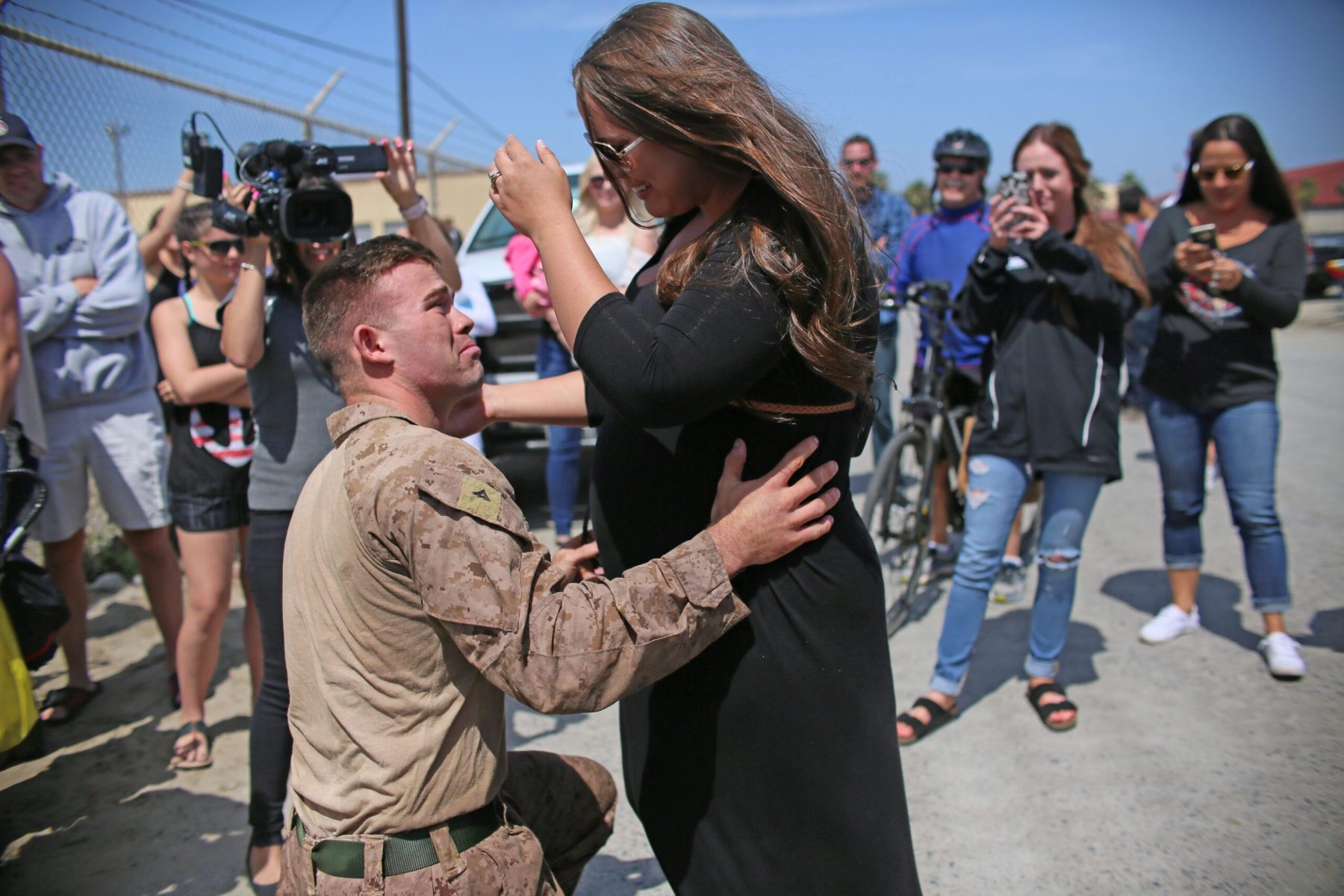For more than two decades, Kim Hunt was constantly on the move. Alongside her husband, now a retired Navy officer, Hunt moved 16 times across the United States and Europe. The couple had two daughters — pregnancies that were planned around whether her husband was on shore duty or sea duty — but they knew many other active-duty service members who struggled to conceive at all.
Now, as associate director of research and training at Blue Star Families, a nonprofit founded in 2009 by military spouses, Hunt helps create, collect and analyze the largest annual military lifestyle survey.
For the first time, the survey included specific questions to better understand family-building challenges among National Guardsmen, Reserve service members, veterans and their families. Hunt said that for several years, respondents would fill in open-ended questions with concerns about their families.
“And the more we researched, the more we realized there was not really good quantitative data,” Hunt said. “There’s a lot of stories, which are very important, but there wasn’t this sort of handle on how deep this goes.”
And when she saw the results, Hunt said she was surprised by just how deep it went: More than two-thirds of respondents said they had faced a family-building challenge at some point in their lives. And nearly half said military service, specifically, hindered their desired number of children or desired time between births.
“We had 1,600 people willing to share their stories, and it was very humbling because they’re such personal stories,” Hunt said. “And so many people said that they just gave up finally, just stopped trying.”
The final survey results include more than 8,000 members of the military community. The answers revealed widespread struggles: Women and LGBTQ+ service members were nearly twice as likely to mention family-building challenges, including tracking ovulation, taking hormone-based medication, trying in vitro fertilization or navigating adoption processes while continually moving across state lines. Some voiced concerns about the impact pregnancy might have on their careers. Active-duty service members are generally 17 to 40 years old, about the same range as the Centers for Disease Control and Prevention’s (CDC) definition of “women of childbearing age.”
“Pregnancy and postpartum recovery time affects a woman’s chances of promotion,” an active-duty Air Force service member wrote anonymously in her response. “Obligations of motherhood and military service commitment limit how many children I felt like I could have.”
Meagan Whalen, the deputy communications director of With Honor, a nonprofit organization led by veterans that focuses on electing veterans into public service, said the military community tends to remain silent on these kinds of personal challenges.
“We in the military community have a mindset of facing challenges and rising to the occasion,” said Whalen, who grew up in a military family, constantly being uprooted. “I think this report will be really reaffirming for them and validating what they’ve experienced throughout their military service. And it’s so valuable in getting information out to the public, letting the civilian world into these nuances.”
Many respondents described inadequate medical coverage for fertility-related treatments, financial difficulties or undue stress on relationships. But the most common obstacle to growing their families was “military commitments” and an “unstable military lifestyle.” Long deployments, especially during wartime, took their toll and left fewer chances for couples to try conceiving. The CDC defines “infertility” as the inability to get pregnant after at least one year of unprotected sex. However, meeting that criteria and accessing potential treatment is nearly impossible for many military families, who are often separated for months at a time.
“We did IVF out of pocket and lost twins,” an active-duty Army spouse wrote. “We had to pay a loan for three years after. If we were able to afford the unlimited tries, we would have a baby together. Him being gone a lot is also a factor.”
One Army veteran said: “We were beginning our third attempt at IVF when I was notified that I was deploying … By the time I returned from deployment, I was 46 and my wife was 43, and we determined that we had lost our last opportunity.”
Another Reserve service member said she and her partner delayed having children together for a decade while they were both on active duty. When they ended up having children, they made sure the births were “very close together to be able to have them while we were stationed together.” But the only way they were able to stay together, she added, was for her to transfer to the reserves.
Another highly cited challenge was expensive out-of-pocket costs due to a lack of health insurance coverage. TRICARE, the health care program of the U.S. Department of Defense Military Health System, does not cover assisted reproduction. (In the civilian world, most states don’t require private insurers to provide infertility benefits). More than 10 percent of respondents with out-of-pocket expenses said they spent more than $35,000; 42 percent spent over $5,000; and nearly 70 percent spent at least $500.
“We tried to conceive for three years before finally becoming pregnant on our fourth round of IVF,” an active-duty Air Force spouse wrote in response to the survey. “The military and TRICARE paid for none of it. We spent most of the money we had saved for a house down payment, around $40,000 in total.”
Another active-duty Air Force spouse said she and her spouse paid $800 for sperm, $200 for shipment and $300 for an IUI procedure each time they tried for a child. It took them five tries.
More than 10 percent of active-duty respondents said family-building challenges are one of the main reasons they’d leave the military. Members of Congress, including military veterans, are currently working on legislation related to military benefits, mental health, spousal employment, time away from family and pay and health care for dependents. Rep. Chrissy Houlahan recently spearheaded the passage of the Military Moms Matter Act to improve postpartum care for military families. Reps. Seth Moulton and Mariannette Miller-Meeks pushed for the passage of The Brandon Act, which strengthened mental health support for service members. And Rep. Jackie Speier penned a letter, signed by more than 140 of her Democratic colleagues, to urge the secretary of defense to eliminate for service members copays for contraceptive care.
“This is a time in which our veterans in Congress can make a distinctive difference,” Whalen said. “They aren’t just reading these numbers. They’ve experienced or have served with those who did, and they understand those unique challenges that military personnel, families and veterans go through.”







